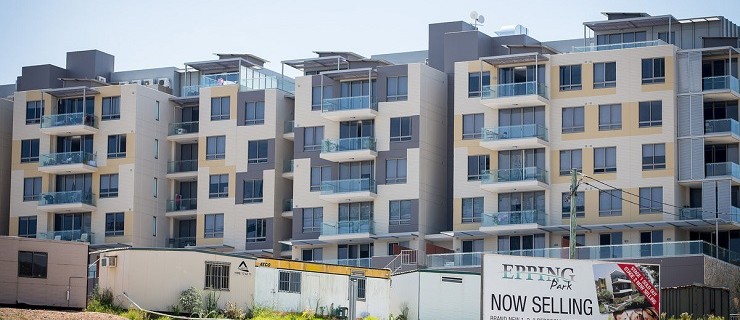Australia's central bank said investors are starting to distort the nation's housing market and is discussing possible measures with other regulators to strengthen lending practices.
“The composition of housing and mortgage markets is becoming unbalanced, with new lending to investors being out of proportion to rental housing's share of the housing stock,” the Reserve Bank of Australia said in its semiannual financial stability review in Sydney. It is in talks with regulators including Treasury on “additional steps that might be taken to reinforce sound lending practices, particularly for lending to investors,” the release showed. No measures were specified.
Policy makers have stepped up warnings on a hot housing market in Sydney and Melbourne, saying accelerating price gains in Australia's two biggest cities may threaten an economy where interest rates have been cut to a record low to aid an economic transition. Treasurer Joe Hockey has called on regulators to closely monitor the housing market and said any measures to stem home-loan growth should be targeted and temporary.
“This is an issue of growing concern for the Reserve Bank and reinforces the notion that rate cuts are off the table,” said Sydney-based Michael Blythe, chief economist at Commonwealth Bank of Australia, the nation's biggest lender. “It's a step towards the macro-prudential side which we haven't really seen before.”
Investor Surge
Investor housing loan approvals are almost 90 percent higher in New South Wales than two years ago and 50 percent higher over the same period in Victoria, the RBA said today. Sydney and Melbourne are the respective capitals of the states.
“Strong investor demand can be a sign of speculative excess,” it said.
The RBA reiterated last week's warning about potential macroeconomic fallout from a booming property market, saying speculative demand could “amplify the property price cycle and increase the potential for prices to fall later,” which would hurt household wealth and spending. “Furthermore, the direct risks to financial institutions would increase if these high rates of lending growth persist, or increase further,” it said.
GovernorGlenn Stevens lowered borrowing costs by 2.25 percentage points in an almost two-year easing cycle to 2.5 percent in August last year as he seeks to boost industries like construction as mining investment ebbs. In response, prices jumped 16 percent in August from a year earlier in Sydney and 12 percent in Melbourne.
Balmain Bonanza
Stevens is grappling with a market where in the inner Sydney suburb of Balmain a derelict house sold for A$2.7 million at a Sept. 20 auction, or A$830,000 above the reserve price. Georgia Glover, an agent at Belle Property Balmain, which marketed the home, said the 450-square-meter block with views of Sydney harbor was sold to a local family who plan to rebuild and live there.
“Banks need to ensure that loans originated in the current environment can still be serviced by borrowers in less favorable circumstances — for instance, at higher interest rates or during a period of weaker economic conditions,” the RBA said today. “Furthermore, banks should be cautious in their property valuations, and conscious that extending loans at constant loan-to-valuation ratios can be riskier when property prices are rising strongly.”
N.Z. Experience
New Zealand introduced mortgage lending restrictions last October to cool the property market. Annual house price inflation fell to 6 percent since they were introduced from 10 percent in September 2013, the Reserve Bank of New Zealand said in its September Monetary Policy Statement. Yet David Hisco, chief executive officer of ANZ Bank New Zealand Ltd., told the Australian Financial Review yesterday the restrictions have driven up prices at the lower end of the market.
Australia has the world's most overvalued housing market on a price-to-income basis after Belgium and Canada, according to the International Monetary Fund. Home prices are expected to rise between 8 percent and 12 percent in 2015 in Sydney, driving growth of as much as 9 percent across Australia's major cities, SQM Research Pty said last week. Melbourne will see gains of between 5 percent and 9 percent, Sydney-based SQM predicted.
In contrast, Australia's wage costs climbed at the slowest pace recorded in statistics bureau data that goes back to 1998, rising at an annual pace of 2.6 percent in the second quarter. Home buyers owed almost 1.8 times their 2013 pretax disposable incomes, higher than Canada, France, Germany, Italy, Japan, U.K. and the u.s., according to a separate report in June.
‘Historically High'
“The willingness of some households to take on more debt, combined with slower growth in incomes, means that the debt-to-income ratio has picked up a little in the past six months,” the RBA said. While the ratio remains within the range of the past eight years at around 150 percent, this is “historically high and hence any further increases in household indebtedness would be taking place from an already high base,” it said.
The RBA said Australia's banking system remained in good shape: Capital ratios have edged up; its asset performance continued to improve; and profitability remained robust. In addition to their current low bad and doubtful debt charges, the major banks' higher profitability relative to international peers appears to “partly reflect operational efficiencies,” the central bank said.
CBA, Westpac Banking Corp., Australia & New Zealand Banking Group Ltd. and National Australia Bank Ltd. — named the four pillar lenders for a law that prevents them from buying each other — reported “a little over” A$14 billion combined profit for their latest six-month results, about 13 percent higher than the corresponding period a year earlier, the RBA said.
Read more: RBA Discussing Measures to Cool ‘Unbalanced' Housing Market



